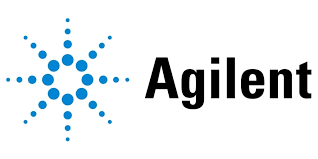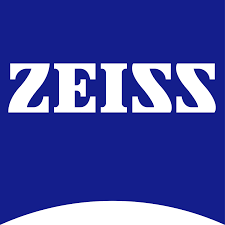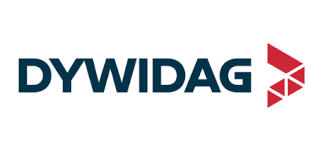Ai In Rare Disease Research
Published Date: 15 December 2025 | Report Code: ai-in-rare-disease-research
Ai In Rare Disease Research Market Size, Share, Industry Trends and Forecast to 2033
This comprehensive report explores the evolving landscape of AI in Rare Disease Research from 2024 to 2033, providing in-depth insights, market size analyses, and strategic forecasts. It covers market trends, technological advancements, regional dynamics, and segmentation, offering stakeholders a clear view of growth drivers and challenges in this specialized sector.
| Metric | Value |
|---|---|
| Study Period | 2024 - 2033 |
| 2024 Market Size | $1.80 Billion |
| CAGR (2024-2033) | 7.2% |
| 2033 Market Size | $3.43 Billion |
| Top Companies | BioInnovate Corp, MedTech Solutions |
| Last Modified Date | 15 December 2025 |
Ai In Rare Disease Research (2024 - 2033)
Ai In Rare Disease Research Market Overview
Customize Ai In Rare Disease Research market research report
- ✔ Get in-depth analysis of Ai In Rare Disease Research market size, growth, and forecasts.
- ✔ Understand Ai In Rare Disease Research's regional dynamics and industry-specific trends.
- ✔ Identify potential applications, end-user demand, and growth segments in Ai In Rare Disease Research
What is the Market Size & CAGR of Ai In Rare Disease Research market in 2024?
Ai In Rare Disease Research Industry Analysis
Ai In Rare Disease Research Market Segmentation and Scope
Tell us your focus area and get a customized research report.
Ai In Rare Disease Research Market Analysis Report by Region
Europe Ai In Rare Disease Research:
Europe shows significant potential, with its market size expanding from 0.62 in 2024 to 1.18 in 2033. The region’s rigorous regulatory environment, coupled with substantial public and private investments in healthcare innovation, supports progressive research in rare diseases.Asia Pacific Ai In Rare Disease Research:
In the Asia Pacific region, the market is evolving from a size of 0.32 in 2024 to 0.61 by 2033. The growth is fueled by emerging technological infrastructures, increased R&D investments, and rising collaborations between local startups and global firms, offering promising avenues for innovation in rare disease research.North America Ai In Rare Disease Research:
North America remains a dominant force in the market, with growth from 0.61 in 2024 to 1.16 in 2033. This region benefits from advanced healthcare infrastructure, high funding for R&D, and a strong presence of market-leading pharmaceutical companies and research institutes.South America Ai In Rare Disease Research:
South America is witnessing gradual market expansion, with reported increases from 0.03 in 2024 to 0.06 in 2033. Although relatively small compared to other regions, the market benefits from growing healthcare investments and regional efforts to integrate AI in clinical research, highlighting untapped potential.Middle East & Africa Ai In Rare Disease Research:
The Middle East and Africa region is poised for steady growth, gradually increasing from 0.22 in 2024 to 0.41 in 2033. Growth here is driven by improving healthcare systems, greater adoption of AI technologies, and strategic initiatives to address rare disease challenges in under-resourced areas.Tell us your focus area and get a customized research report.
Ai In Rare Disease Research Market Analysis By Technology
Global AI in Rare Disease Research, By Technology Market Analysis (2024 - 2033)
The technology segment of AI in Rare Disease Research is primarily driven by breakthroughs in machine learning, natural language processing, and data analytics. In 2024, the market size for machine learning reached 1.16, expanding to 2.22 by 2033, accounting for over 64% of the technology share. These innovations are leading to more accurate predictive models, enabling faster diagnosis and improved treatment protocols. Continuous innovation in algorithm development and computing power is expected to further drive market growth and revolutionize clinical workflows while facilitating more targeted research initiatives in rare disease therapeutics.
Ai In Rare Disease Research Market Analysis By Application
Global AI in Rare Disease Research, By Application Market Analysis (2024 - 2033)
Applications in AI for Rare Disease Research are becoming increasingly diversified, covering drug discovery, clinical trials, diagnosis and prognosis, clinical data, genomic data, and real-world evidence. The drug discovery segment, for example, exhibits substantial growth with market values climbing from 1.16 to 2.22 between 2024 and 2033. Similarly, each application area is benefiting from enhanced algorithmic precision and improved data integration. This diversification enables a comprehensive approach to understanding rare diseases and helps in developing customized therapies, thereby significantly impacting patient outcomes and overall market expansion.
Ai In Rare Disease Research Market Analysis By End User
Global AI in Rare Disease Research, By End User Market Analysis (2024 - 2033)
The end-user segmentation encompasses pharmaceutical companies, research institutes, healthcare providers, and regulatory bodies. In the pharmaceutical companies segment, market size increased from 1.01 in 2024 to 1.92 in 2033, maintaining a dominant market share of 55.99%. Research institutes and healthcare providers are also pivotal, contributing 23.47% and 10.39% respectively. This diversity highlights varied utilization of AI solutions across the healthcare value chain, enhancing drug development processes, improving clinical decisions, and ensuring patient safety. The tailored integration of AI across these end-user groups is a critical driver that bolsters the overall market momentum.
Ai In Rare Disease Research Market Analysis By Data Source
Global AI in Rare Disease Research, By Data Source Market Analysis (2024 - 2033)
Data source segmentation plays a crucial role in providing the analytical backbone for AI in Rare Disease Research. Key data sources include clinical data, genomic data, and real-world evidence. The clinical data segment, for instance, grew significantly from 1.16 to 2.22 between 2024 and 2033, representing the bulk of the market share at 64.71%. The aggregation and analysis of these diverse datasets enable predictive analytics, enhance diagnostic accuracy, and support precise therapeutic interventions. This robust data foundation is essential for driving continuous improvements and innovation in rare disease research and treatment strategies.
Ai In Rare Disease Research Market Analysis By Region
Global AI in Rare Disease Research, By Region Market Analysis (2024 - 2033)
Regional segmentation offers a granular view of market dynamics, with distinct growth trajectories observed across North America, Europe, Asia-Pacific, Latin America, and the Middle East and Africa. North America leads with advanced healthcare systems and robust R&D investments, while Europe benefits from strong regulatory frameworks and collaborative research initiatives. In Asia-Pacific, rapid technological adoption and increasing investments are spurring growth. Latin America and the Middle East and Africa, although smaller in market size, are emerging as promising areas due to improving infrastructure and targeted government policies, making them critical for future market expansion.
Ai In Rare Disease Research Market Trends and Future Forecast
Tell us your focus area and get a customized research report.
Global Market Leaders and Top Companies in Ai In Rare Disease Research Industry
BioInnovate Corp:
BioInnovate Corp has established itself as a pioneer in integrating AI with rare disease research. The company leads projects in drug discovery and clinical trials, driving innovations that significantly reduce time-to-market for critical therapies.MedTech Solutions:
MedTech Solutions is recognized for its advanced AI platforms that enhance diagnostic accuracy and patient prognosis. With extensive collaborations across global research institutes, the company plays a vital role in transforming rare disease management through technology-driven insights.We're grateful to work with incredible clients.









FAQs
What is the market size of ai In Rare Disease Research?
The AI in Rare Disease Research market is anticipated to reach approximately $1.8 billion by 2033, growing at a CAGR of 7.2% from 2024. This growth is driven by increasing investments in AI-driven research and advancements in technology.
What are the key market players or companies in this ai In Rare Disease Research industry?
Key players in the AI in Rare Disease Research market include leading pharmaceutical companies, research institutes, and healthcare providers. These entities are pivotal in shaping market dynamics through innovation in AI technologies and research applications.
What are the primary factors driving the growth in the ai In Rare Disease Research industry?
Primary growth factors include the rising prevalence of rare diseases, increased funding for biomedical research, and advancements in AI technologies that enhance drug discovery and clinical trials, leading to improved healthcare outcomes.
Which region is the fastest Growing in the ai In Rare Disease Research?
North America is the fastest-growing region in the AI in Rare Disease Research market, projected to grow from $0.61 billion in 2024 to $1.16 billion by 2033. Europe and Asia-Pacific are also rapidly expanding, attributed to increased healthcare investments.
Does ConsaInsights provide customized market report data for the ai In Rare Disease Research industry?
Yes, ConsaInsights offers customized market report data tailored to client needs in the AI in Rare Disease Research industry. The customization includes detailed analysis and specific insights relevant to client interests.
What deliverables can I expect from this ai In Rare Disease Research market research project?
Deliverables include comprehensive market analysis reports, segmentation data, regional trends, competitive landscape assessments, and forecasts, enabling stakeholders to make informed business decisions and strategies.
What are the market trends of ai In Rare Disease Research?
Current trends include increased integration of machine learning in drug discovery, heightened collaboration between pharma and technology firms, advancements in genomic data analysis, and a focus on real-world evidence in research efforts.
